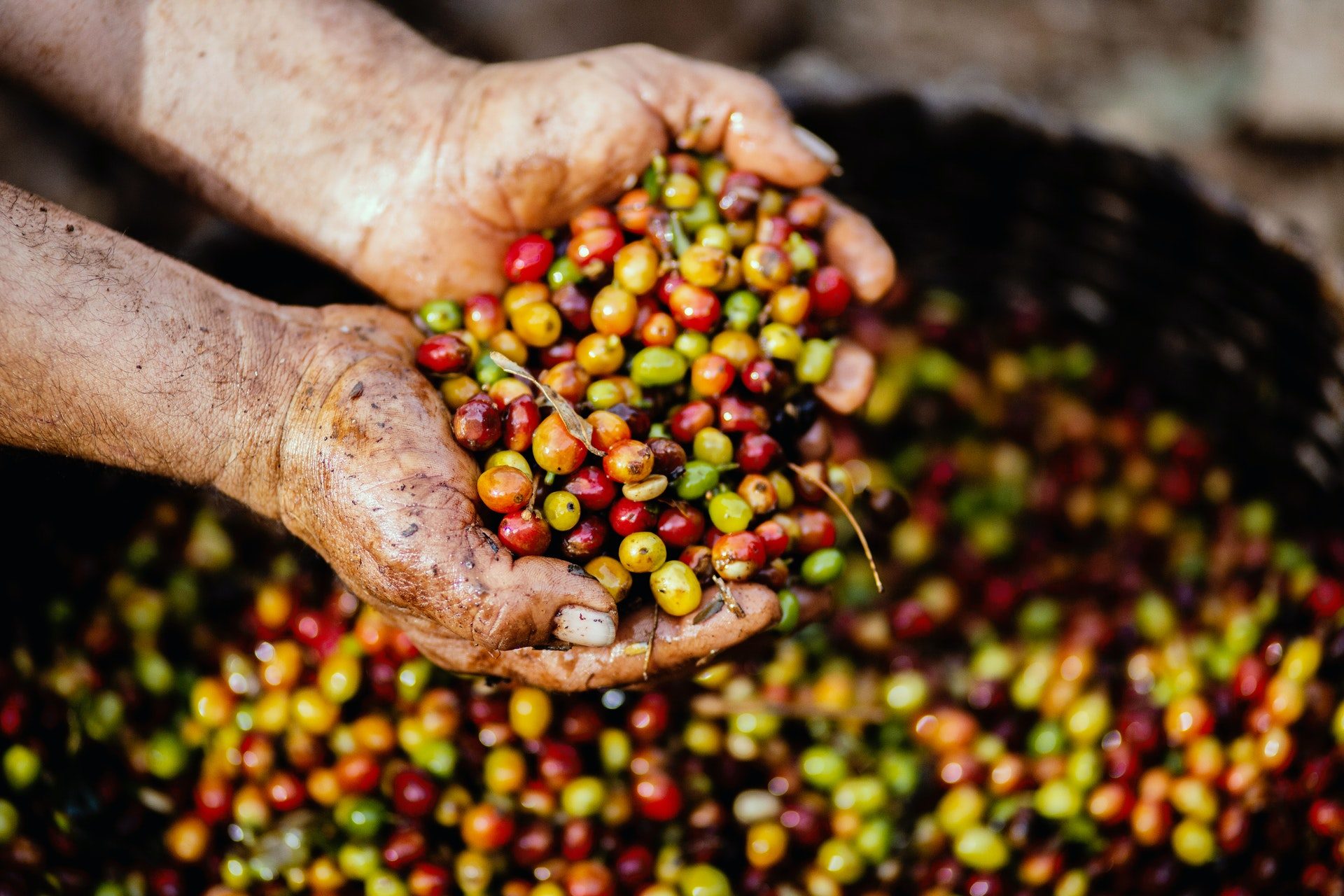All coffee beans are not made equal. Different geographical locations yield different varieties of coffee beans, and different varieties vary in flavour. For example, the Coffea arabica plant, which grows at high altitudes throughout the equatorial regions of the world, is considered the best coffee you can get your hands on today. Today, Central America, South America, and Africa are its greatest producers.
Another species of coffee plant, Coffea robusta, is also grown primarily in Africa, but this plant is used mostly for the lower grades of coffee that are on the market today.
These two are the most economically important varieties of coffee plant are the Arabica and the Robusta. Approximately 60% of the coffee produced worldwide is Arabica and 40% is Robusta. Arabica beans consist of 0.8–1.4% caffeine and Robusta beans consist of 1.7–4% caffeine.
Within the same species, there is plenty of variation depending on the geographical location of the place where it is grown. The flavours vary because of the variance in altitude, rainfall, and soil quality.
The coffee beans we get to see are usually brown in colour, but they weren’t always that way. Coffee beans are green at the time of harvest. These green beans are then roasted at around 400°F for approximately 5 to 15 minutes depending on the temperature, while rotating them in large bins.
Most beans are light or medium roasted, resulting in a light- or medium-brown colour and mild taste. Viennese or dark-roasted coffee results in a darker brown bean and a virtually burnt, yet tangy taste. The darkest roast- called espresso, Italian, or French- has a dark brown to virtually black colour and a burnt to charcoaly taste.

Café Duran Geisha Ground Coffee – 200 grs
The amount of roasting brings in another layer of variation to the coffee. So, there can be multiple coffee types within the same species. Now, most of the coffee drinks and beans you buy from the market aren’t just one coffee species roasted uniformly. Instead, most of the coffee you buy is a blend of different species roasted to different degrees.
For example, the most common coffee we find today is called “Mocha Java”, which as the name suggests is a blend of Arabica coffee from Mocha (in Yemen) and Java (Indonesia).
As the popularity of coffee has grown, so have new trends. One of the most popular new trends we see today in the world of coffee is that of flavoured coffee beans. Today, there are multiple flavoured coffee beans available in the market such as- Vanilla Nut, Chocolate Almond, and Irish Cream. These come in handy, but you can achieve the same result by adding the flavour to the drink during preparation. This way you have more flexibility. When preparing flavoured coffee, make sure you put in flavours that go with each other.
Another trend we see on the rise today is that of decaffeinated coffee. Back in the day, one needed to settle with low quality coffee beans for a decaf. Today, however, no such compromise needs to be made as you can find delicious high quality decaf varieties of coffee beans quite easily. This has primarily happened due to the refinement of the decaffeination process. One of the most prevalent decaffeination processes today uses a chemical solvent (most commonly methylene chloride) that dissolves with the caffeine and can then be discarded, together with the caffeine. Another popular process is the swiss water process, which uses water as a solvent. However, this process is much slower and is required to be done multiple times for complete decaffeination.

Café Duran – Regular Ground – 425 grs

CAFÉ DURAN – Decaf Ground Coffee – 212 GRS
Credits:
The Big Book of Beverages
Master Making Coffee, Iced Tea, Juices, Infused Water, Alcoholic Cocktails, Smoothies, and Much More with Over 870 Recipes!
Stephanie Bennett,
Marissa Marie,
& John Carter




Comments are closed